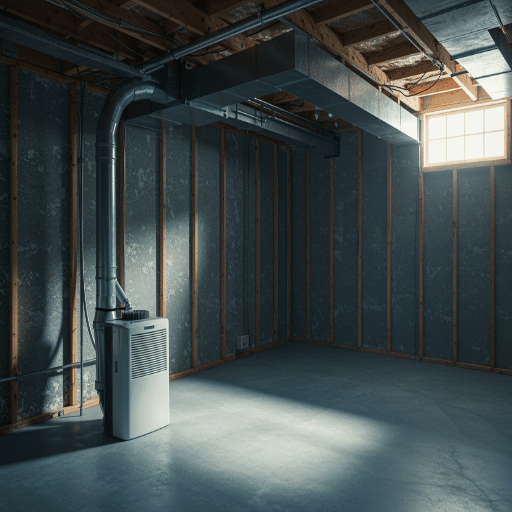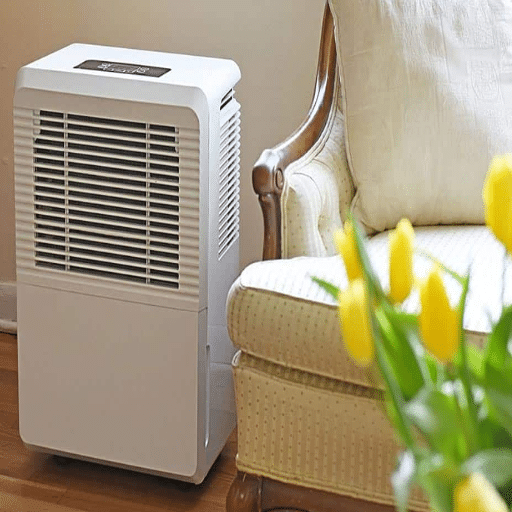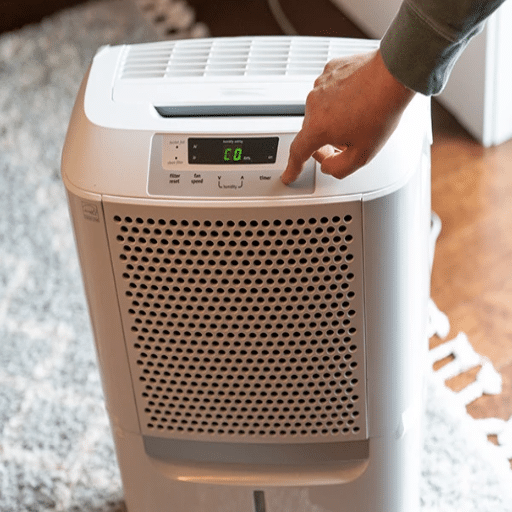Dehumidifiers are a great help to keep the humidity levels in your house at their best and also to have good-quality air. However, if ice is starting to form on your portable dehumidifier, it may confuse you and even cause you worries at the same time. So, what is the reason for this problem, and how does it affect the performance of the device? In this write-up, we will give a thorough explanation of the main reasons for the ice on the dehumidifiers, the contributors for this frequent problem, and the solutions for it. It does not matter whether the cause is the weather, the dehumidifier getting faulty, or issues with maintenance, we will give you the necessary information to figure out what is going on and to stop it from happening again, hence, the dehumidifier will be efficient through the whole process.
Understanding Dehumidifier Ice Formation

The formation of ice on dehumidifiers is a frequent downside, especially in places with low ambient temperatures or inadequate air circulation. One of the major reasons is the interplay of the refrigerant coils with the ambient air. When the air is too cold, usually below 65°F (18°C), the moisture that is being pulled from the air can get frozen when it comes in contact with the coils. This is due to the refrigerant inside the coils going down to a temperature that is less than the freezing point of water.
⚠️ Common Contributing Factors:
- Dirty air filters – Slow down the heat exchange process
- Blocked airflow – Leads to freezing of the coils
- Defective defrost control – Causes temperature regulation issues
- Low refrigerant level – Prevents proper frost prevention
Regular maintenance consisting of changing filters, checking coils, and putting the machine in an area with good ventilation and temperature can greatly reduce the occurrence of ice formation. By looking into these factors and keeping the dehumidifier in top condition, homeowners can guarantee uninterrupted and energy-efficient operation.
What Causes Ice Build-Up in Dehumidifiers?
The main reason for ice formation in dehumidifiers is the combination of low temperatures and the reduced airflow over the evaporator coils. The refrigerant in the coils cannot extract the heat properly when the room temperature drops below 65°F (18°C), leading to the freezing of the condensation on the coils.
Key Factors Leading to Ice Build-Up:
- Low Room Temperature: Operating below recommended temperature range
- Limited Air Movement: Result of dirty air filters or dirty coils
- Wrong Placement: Unit positioned in areas with poor circulation
- Improper Use: Running for long periods in cold or unheated areas
The Role of Humidity in Ice Formation
Humidity has a significant impact on the ice formation mechanism and is one of the main factors in refrigeration and dehumidification applications. The higher the humidity of the surrounding air, the more water vapor there is in the air. This extra water vapor might settle down as liquid on the cold refrigerant coils and, when the temperature is below freezing, will then turn into ice rapidly thus causing ice to build up.
✓ Optimal Humidity Levels
Keeping the indoor humidity level in the range of 30-50% can greatly reduce the problem of ice formation on the machines. Additionally, it is recommended that up-to-date methods such as the use of hygrometers for humidity monitoring and the utilization of smart dehumidification controls are the best preventive measures.
How Dehumidifier Coils Contribute to Ice Issues
1. Suboptimal Coil Temperature
When coil surface temperature goes below the dew point of the air around it, the moisture starts to condense. If the coil temperature continues falling and reaches freezing point 32°F (0°C), the condensed moisture may freeze and form ice. This problem is made worse by colder ambient temperatures or poorly insulated systems.
2. Insufficient Airflow Across Coils
Coolant flowing from evaporator coils could also be unevenly affected by air that has low temperature on certain parts of the coils and thus can be more ice forming considering the cold spots exist. Reduced airflow is mainly caused by:
- Blocked filters
- Fan malfunctions
- Poorly maintained ductwork
3. Overloading of Dehumidifiers
Using a dehumidifier in a very humid space or one that has less capacity than is required can result in the evaporator coils being overworked. This frequently leads to the coils getting very cold and thus prone to freezing.
4. Faulty or Incorrectly Calibrated Sensors
Temperature or humidity sensors that are defective or improperly calibrated can prevent the effective cycling regulation of the dehumidifier. This results in long operation cycles such that the coils have cold periods which ultimately leads to ice formation.
5. Improper System Maintenance
The absence of preventive maintenance actions like cleaning of coils or checking of refrigerant levels, will make the system less efficient. For example:
- Dirty coils reduce heat transfer effectiveness
- Insufficient refrigerant disrupts the cooling cycle
- Both lead to localized freezing
Common Reasons for a Dehumidifier to Freeze
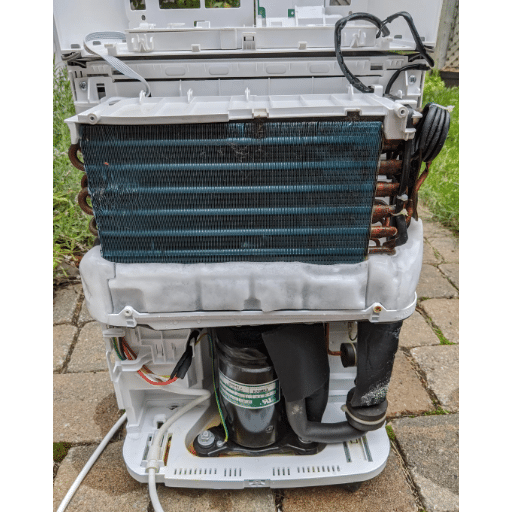
| Reason | Description | Impact |
|---|---|---|
| Restricted Airflow | Dirty filters, blocked vents, or obstructions near intake/exhaust | Coils get too cold, ice forms on surfaces |
| Low Ambient Temperatures | Operating below 60°F (15.5°C) | Refrigerant pressure drops, ice forms on coils |
| Oversized/Undersized Units | Wrong unit size for the room | Disrupts system efficiency, uneven temperature distribution |
| Refrigerant Leaks | Diminished refrigerant levels | Pressure drop causes temperature below freezing point |
| Faulty Sensors | Defective temperature or humidity sensors | Improper system responses, incorrect cycling |
Restricted Airflow
Restricted airflow is the main factor or even the primary culprit when it comes to a dehumidifier freezing up. If the airflow through the system is not good, the coils can get too cold which results in ice forming on them.
Common Airflow Restrictions:
- Dirty air filters
- Blocked vents
- Objects near the intake or exhaust
- Dust accumulation on internal components
Low Ambient Temperatures
Freezing can result from operating a dehumidifier in a place that is below the manufacturer’s specified temperature range. Most dehumidifiers effectively operate at more than 60°F (15.5°C). Using at temperatures below that will cause the refrigerant pressure to drop thus ice being formed on the coils.
Modern Solutions: Recently manufactured units often have the auto-defrost feature that prevents this condition, however, in the case of older models, or if the device is not operated properly, freezing can still occur.
Oversized or Undersized Units
The wrong size of a dehumidifier unit causing freezing problems in the room where it is used can be one of the causes for that:
- Larger Unit: Cools the coils too fast without getting up to the desired humidity level
- Smaller Unit: Exhausts itself in a high humidity place
- Both Cases: Disrupt the efficiency of the system and result in uneven temperature distribution on the coils
Refrigerant Leaks
Diminished refrigerant levels owing to leaks can result in a pressure drop in the cooling coil system. This pressure descent decreases the temperature of the refrigerant, causing it to go below the freezing point, which eventually leads to ice formation.
⚠️ Important Notice:
Carrying out regular maintenance and making inspections to check for problems with refrigerant are very important in identifying and addressing such issues. Always hire a licensed HVAC technician for refrigerant-related problems.
Insufficient Airflow and Its Effects
HVAC systems with inadequate airflow, often due to clogged filters, defective fans, or obstructed ducting, have a huge negative impact on the functioning of cooling systems. The compressor is not able to exchange heat properly when airflow is constrained, and as a result, its temperature drops to a stage where frosting or ice formation occurs.
Consequences of Insufficient Airflow:
- Lower energy efficiency
- Long-lasting damage to components
- Increased risk of moisture control issues
- Higher operational costs
- Reduced system lifespan
Faulty Sensors and Their Impact on Performance
Inaccurate readings or absence of data transmission can seriously compromise the performance and efficiency of HVAC systems through faulty sensors. The outcome of these faults would be improper responses from the system, such as:
- Incorrect temperature control
- Uneven airflow distribution
- Varied humidity levels
- Excessive energy usage
- Wearing down of components
Signs of Failing Sensors:
- Abnormal increments in energy usage
- Unusual system cycling
- Lack of consistency in temperature and humidity
- Frequent on/off cycling
Thermostat Settings and Dehumidifier Freeze
The relationship between thermostat settings and dehumidifier freezing is one of the critical factors in the optimization of HVAC (Heating, Ventilation, and Air Conditioning) systems. If the thermostat is set to an excessively low temperature, the evaporator coils in the dehumidifier can reach below freezing, resulting in ice formation and reduction of the dehumidifier’s efficiency.
✓ Optimal Thermostat Settings
Most manufacturers advocate to set the thermostat temperatures above 60°F (15.5°C) which is not only to avoid freeze conditions but also to facilitate effective dehumidification.
Troubleshooting a Portable Dehumidifier
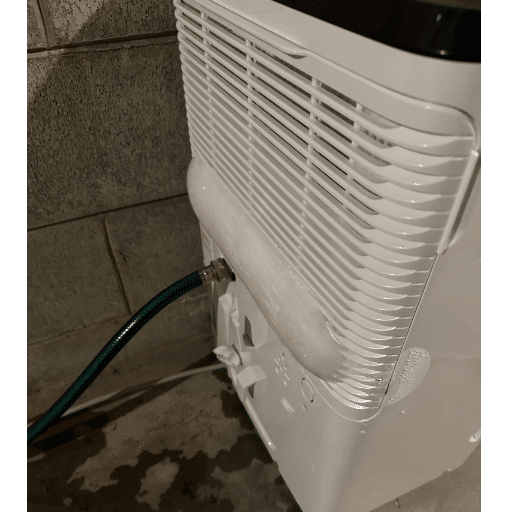
The Dehumidifier is Not Collecting Water
Check the following:
- Ambient temperature is above 65°F (18.3°C)
- Humidity level in the space is above the pre-set level
- Filters are clean and airflow is free
- Refrigerant levels are adequate
Excessive Noise During Operation
Possible causes:
- Loose parts
- Obstructed fans
- Debris collecting in unit
Solution: Look through all the mobility parts and clean or tighten them according to the necessity.
The Unit Freezes or Frosts Over
Common causes:
- Low ambient temperature
- Restricted airflow
Solution: Make sure the temperature in the room is over 60°F (15.5°C). Purify the filters and vents. Check evaporator coils for refrigerant leaks.
Continuous Cycling On and Off
Likely issues:
- Defective humidistat
- Rapid temperature changes due to poor insulation
Solution: Check the humidistat for accuracy and re-calibrate if necessary. Ensure doors and windows are properly sealed.
How to Fix a Dehumidifier That Keeps Icing
1Check the Ambient Temperature
Dehumidifiers are not effective for low-temperature operation below 65°F (18°C) unless they are specially made for low-temperature applications. If the machine is put in a basement, garage, or other colder areas, the low temperature will cause coils to freeze.
Solution: Relocate the machine to a place with sufficient heat or use a low-temperature dehumidifier.
2Inspect the Airflow
The evaporator coils can get iced up if the airflow is blocked or restricted. Check and make sure that the air intake and exhaust grilles are clean and not blocked with dust or dirt.
Actions to take:
- Clean the filter as per the manufacturer’s instructions
- Replace torn or damaged filters immediately
- Remove any obstructions near vents
3Examine the Evaporator Coils
Evaporator coils that are not clean will not facilitate heat transfer and consequently, freezing will occur.
Cleaning process:
- Turn off the power to the unit
- Check the coils for dust or frost build-up
- Use a soft brush or an approved cleaner to gently clean them
- Take care of the fragile fins
4Check the Refrigerant Levels
Low refrigerant levels as a result of leaks can also lead to freezing of the coils since the system has to work harder to keep the pressure right.
⚠️ Professional Service Required: It is advisable to hire a licensed HVAC technician to check and recharge the system if the refrigerant related problem is suspected.
5Assess the Humidistat
An unstable humidistat will make the unit work harder, hence the issue of icing will be worse then.
What to do: Check the humidistat for precision and reset or get a new one if it gives different readings from the actual humidity in the room.
6Evaluate the Defrost Function
A lot of dehumidifiers come with a built-in defrost feature that automatically turns on during ice formation. If this feature is not working properly, the unit will not be able to cycle well enough to melt the ice.
Action: Refer to the user manual for testing the defrost system and getting it repaired if required.
Checking the Fan Motor and Its Functionality
Essentially, the fan motor is a key part of the dehumidifier’s functioning, since it moves the air around the evaporator coils and thus helps to remove the moisture.
Inspection Process:
- Visual Inspection: Look at the fan blades closely for any possible defects, dirt, or misalignment
- Electrical Testing: Take a multimeter and measure the electric current through the windings of the fan motor
- Operational Check: Check the motor sound and vibration during its running to see if there are signals of the components being worn out
Common Fan Motor Issues:
- Overheating: Often caused by dust buildup
- Reduced Airflow: Dust accumulation cutting off proper ventilation
- Faulty Capacitors: Preventing the motor from acquiring enough power to start
Maintenance Tips: Regular dusting off and maintenance, which include removing dust that has built up on the blades and keeping the moving parts adequately lubricated, can very much prolong the life of the motor.
Defrosting Techniques for Frozen Dehumidifiers
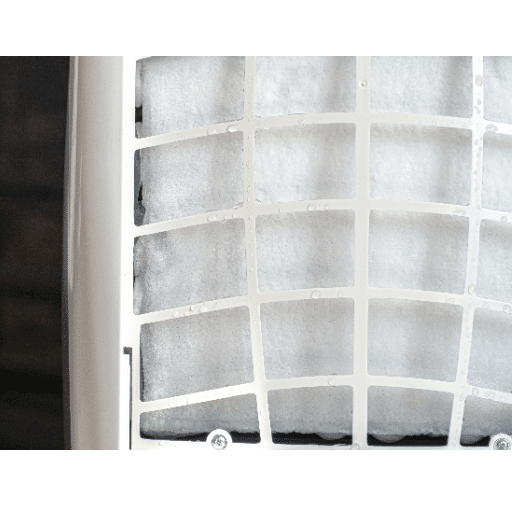
| Step | Action | Time Required |
|---|---|---|
| 1. Turn Off Unit | Immediately unplug the dehumidifier after switching it off | Immediate |
| 2. Natural Defrost | Let the unit sit at room temperature to defrost by itself | Several hours |
| 3. Increase Temperature | Move unit to warmer spot or heat the room up | 1-2 hours |
| 4. Clean Coils | After ice melts, clean coils thoroughly to remove debris | 30 minutes |
| 5. Enhance Circulation | Check and clean/replace air filters | 15-20 minutes |
Detailed Defrosting Steps
Turn Off the Unit Immediately
In order to stop the ice from accumulating any more and to avert any damage to the compressor, unplug the dehumidifier after switching it off. Then let the unit sit at room temperature to defrost by itself. Depending on the amount of ice, this might take a while, probably several hours.
Increase Ambient Room Temperature
Dehumidifiers are most effective in areas with temperatures above 65°F (18°C). If the room is too cold, move the unit to a warmer spot or heat the room up in some way. Today’s units with automatic determining when the defrost cycle is needed are especially good at this problem.
Inspect and Clean the Coils
After the ice has melted completely, take the coils and clean them thoroughly to get rid of dirt, dust, and debris. This helps to get the proper airflow and improves the unit’s efficiency. A soft cloth or the coil cleaning solution that the manufacturer has approved can be used.
Enhance Air Circulation
Air filters should be checked and cleaned or replaced if necessary in order to ensure adequate airflow. Reduced airflow can contribute to freezing. Make sure the dehumidifier is positioned in such a way that it is not obstructed by walls and is ventilated properly.
Perform Preventive Maintenance
In case of continued freezing, check the refrigerant levels of the unit or test the functioning of the defrost sensor (if available). If the sensor is not working, it may still need to be put in a new one. Talk to a certified technician or look at the manufacturer’s maintenance guide for more details.
Preventing Ice Build-Up in Your Dehumidifier
To minimize the possibility of ice forming in the dehumidifier further, the operating surroundings must be brought up to the conditions recommended by the manufacturer. The majority of dehumidifiers work best at certain temperatures, which are usually anywhere from 41°F (5°C) to 90°F (32°C). If the room temperature often falls below this range, you might want to switch to a dehumidifier that is specifically designed for low-temperature operation that incorporates features such as automatic defrost technology to be less affected by cold conditions.
Key Prevention Strategies
✓ Maintain Proper Operating Environment
- Keep room temperature within manufacturer’s recommended range
- Ensure adequate heating in cold spaces
- Consider low-temperature models for basements and garages
- Use automatic defrost technology when available
✓ Ensure Unobstructed Airflow
- Keep intake and exhaust vents clean and free of dust or debris
- Maintain at least 12 inches of clearance around the unit
- Regularly clean filters (every 2 weeks for heavy use)
- Avoid placing unit against walls or in corners
✓ Regular Component Inspection
- Check internal coils for signs of damage or excessive dirt
- Gently clean coils with a soft brush
- Use non-corrosive coil cleaner for thorough cleaning
- Inspect for proper heat exchange efficiency
✓ Monitor System Components
- Test defrost sensor functionality with a multimeter
- Replace malfunctioning sensors immediately
- Follow manufacturer’s guidelines for sensor testing
- Schedule professional refrigerant level checks
⚠️ Professional Service Required
If you are still having problems after carrying out proper maintenance activities, you should get the opinion of a certified technician to check the refrigerant levels in the system. Low refrigerant can damage the cooling cycle, which will greatly increase the chances of freezing. Taking care of such technical issues ahead of time will not only ensure the dehumidifier’s efficient performance but also prolong its lifespan.
Tips to Maintain Optimal Airflow
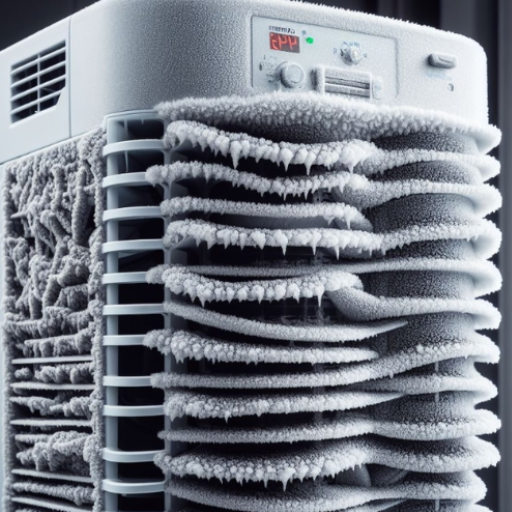
| Maintenance Task | Frequency | Impact on Performance |
|---|---|---|
| Replace/Clean Filters | Every 2 weeks (reusable) / Every 3-6 months (disposable) | Can limit airflow by up to 50% if neglected |
| Unblock Ventilation Grilles | Weekly inspection | System can lose up to 20% efficiency if blocked |
| Ductwork Inspection | Professional cleaning every 3-5 years | Leaks can cause up to 30% energy loss |
| Proper Unit Placement | Initial setup and ongoing monitoring | Prevents recirculation of stale air |
| Humidity Level Control | Daily monitoring with hygrometer | Keep between 30-50% for optimal performance |
Detailed Airflow Maintenance Guidelines
1. Filters Should Be Replaced or Cleaned Regularly
Air filters are an essential part of an air conditioning system. If they get too dirty or clogged, they can limit the airflow by as much as half, thus making the whole system work harder and maybe even causing it to eventually break down.
Schedule:
- Reusable filters: Clean every two weeks
- Disposable filters: Replace every 3-6 months
- Follow manufacturer’s directions for best results
2. Ventilation Grilles Should Remain Unobstructed
Making certain that vents and grilles are not blocked by furniture, curtains or dust piles is a must. Air circulation will be ineffective if vents are blocked and as a result, the system might lose up to 20% of its efficiency due to the imbalances created by the pressure.
3. Ductwork Inspection and Maintenance
Air leaks or the accumulation of dirt can occur in ducts and both these factors can lead to reduced airflow and energy loss of up to 30%. Check the ducts often for any visible damage or signs of leakage and arrange professional cleaning every 3-5 years to get the best performance out of your system.
4. Placement of the Unit Should Be Done Properly
The dehumidifier or HVAC system should be located in such a way that there is enough space around it to allow air to flow freely. By keeping at least 12 inches of space around the unit, it helps to stop the stale air from being recirculated and also prevents the heating of the internal parts of the system.
5. Humidity Levels to Be Controlled in the Area
High humidity can cause moisture to form in the system which will then restrict airflow and lower the efficiency of the system. It is advisable to have a hygrometer to keep track of the indoor humidity levels and to keep them between 30% and 50% so that both the system’s performance and airflow are optimally maintained.
Regular Maintenance for Dehumidifier Coils
The coils of a dehumidifier are definitely a system’s lifeblood as they bring on the condensate process that is vital for air moisture removal. Maintenance of these coils is indispensable to support the system’s best operation and energy-saving use.
✓ Recommended Maintenance Schedule
It is advisable to perform the maintenance every three to six months to avoid the accumulation of dirt, dust, and mold which could block the airflow and consequently decrease the operating effectiveness.
Coil Maintenance Process
Step 1: Initial Cleaning
Use a soft broom or the vacuum cleaner with the suitable attachment for the cleaning. This removes loose dust and debris from the coil surfaces.
Step 2: Deep Cleaning
Follow up with a coil cleaner solution for removing stubborn dirt and buildup. Use only manufacturer-approved cleaning solutions to avoid damage to the coils.
Step 3: Physical Inspection
Check the coils for possible corrosion or physical damage. Look for bent fins, rust spots, or signs of deterioration that could affect performance.
Step 4: Fin Straightening
The damaged fins can be straightened with help from a fin comb facilitating a return to normal airflow. Be gentle to avoid breaking the delicate fins.
Step 5: Area Maintenance
Keep the area around the dehumidifier clear of any obstructions or debris that can affect the machine’s performance. Maintain proper clearance on all sides.
Benefits of Regular Coil Maintenance:
- Prolongs the life of the coils
- Improves overall dehumidifier efficiency
- Reduces energy consumption
- Prevents ice formation
- Maintains optimal moisture removal
Adjusting Settings to Prevent Ice Formation
In order to successfully inhibit the formation of ice on a dehumidifier, it is very important to set the unit according to its working environment.
Optimal Setting Adjustments
Enable Defrost Cycle
The defrost cycle, if there is one, should be turned on under temperatures lower than 65°F (18°C), with a good frequency, especially in those conditions. An automatic defrost function that many modern dehumidifiers are equipped with can help in ice build-up prevention by temporarily doing away with dehumidification and thus allowing the coils to warm.
Adjust Humidity Settings
Altering environmental conditions according to the setting is a very important factor; if you keep the humidity level above 50% relative humidity, it not only helps with the coils but also decreases the likelihood of freezing.
Ensure Proper Ventilation
Make sure that the dehumidifier is put in an area that has good ventilation and circulation; limited air circulation can increase iciness. Maintain adequate spacing around all sides of the unit.
Use Frost-Free Features
If your unit is intended for use in cold areas, check that it has frost-free parts such as:
- Insulated coils
- Thermoelectric cooling systems
- Advanced temperature sensors
- Automatic defrost timers
✓ Results of Proper Adjustment
The combination of very careful adjustments of the equipment and regular manual maintenance leads to a significant reduction in operational interruptions due to ice formation, thus increasing the lifespan of the equipment and the performance being consistent.
References
-
Lawrence Berkeley National Laboratory (LBNL)
This report discusses dehumidifier usage in the U.S. residential sector, including energy efficiency considerations and issues like ice buildup on mechanical dehumidifiers.
Visit LBNL Report -
Purdue University Research Repository
Although access to the specific document was restricted, Purdue University is a reputable academic source for research on HVAC systems and dehumidifiers.
Visit Purdue Repository -
Anoka County Recycling & Resource Solutions
While primarily focused on recycling, this government site provides guidelines for handling and disposing of dehumidifiers, which may include insights into common issues like icing.
Visit Anoka County Resource
Frequently Asked Questions (FAQ)
Why do dehumidifiers freeze?
The indoor temperature is the main factor that can lead to dehumidifiers freezing. If a basement or any other room for that matter has an indoor temperature of less than 60 degrees Fahrenheit, then there is a high possibility that the unit will freeze. The coil used to cool the air will be very cold leading to condensation and consequent freezing on the unit’s condenser coils. Also, the airflow is not adequate due to a dirty filter or the blower wheel and the fan blade not functioning properly, which again causes freezing.
How do I solve the issue of the dehumidifier icing up?
First of all, when you want to solve the issue, make sure the dehumidifier is moved to a place that is warmer. The ambient temperature should be warmer at least 65 degrees Fahrenheit. Also, check and clean the filter as it helps to promote the airflow better. If the problem persists, check to see if there is ice buildup on the coils and let it melt before again operating the dehumidifier. If the unit is running low on refrigerant, it may need to be replaced.
Why does my dehumidifier freeze even when it is really dry?
Sometimes the humidity may be really low, but the temperature in the room still low, and in that case, it will be possible that a dehumidifier may freeze. The condensation on the cold coil will freeze, particularly if the airflow is poor. It is imperative to keep the temperature and humidity at a proper level so that the dehumidifier does not get iced up.
How does insufficient airflow create frozen dehumidifier?
When there is insufficient airflow, the dehumidifier might have a hard time removing moisture from the air. Unclean filter or defective fan motor can prevent air from circulating in the unit properly and hence it won’t be able to dehumidify effectively, which will cause the cold coil to ice up. Regular cleaning of the filter and checking if the fan is functioning well will help.
What do I do if the dehumidifier is put in a cold room?
If you have placed the dehumidifier in a cold room, it would be better to move it somewhere that is warmer. Make sure the place is above 65 degrees Fahrenheit so that the machine does not ice up. Also, keep an eye on the quality of air indoors to verify whether it is appropriate for the dehumidification process.
Is it safe to operate the dehumidifier with frost on the coils?
It is considered a bad practice to operate the dehumidifier with frost on the coils. The unit may sustain further freeze and get the compressor damaged. Therefore, it is advisable to switch off the unit, allow it to melt, and then check the coils before using it again.
What should I do to keep my dehumidifier in good condition and free of ice?
Keeping your dehumidifier free of icing means scheduling regular maintenance that involves filter cleaning and checking the coils for any ice build-up. Also, keep adjusting the thermostat settings to maintain an optimal temperature and humidity level in the room. If the dehumidifier is often icing up, then you should look into the indoor temperature and airflow conditions.
How do I know that the dehumidifier is worn out and it is time to get another one?
Recurrent ice build-up even after the unit has been maintained regularly, considerable drop in the unit’s performance in removing moisture, and unusual sounds coming from the fan motor are some of the signs that your dehumidifier needs to be replaced. If the refrigerant is low in the unit and repair costs are high, getting a new one might be the best option.

